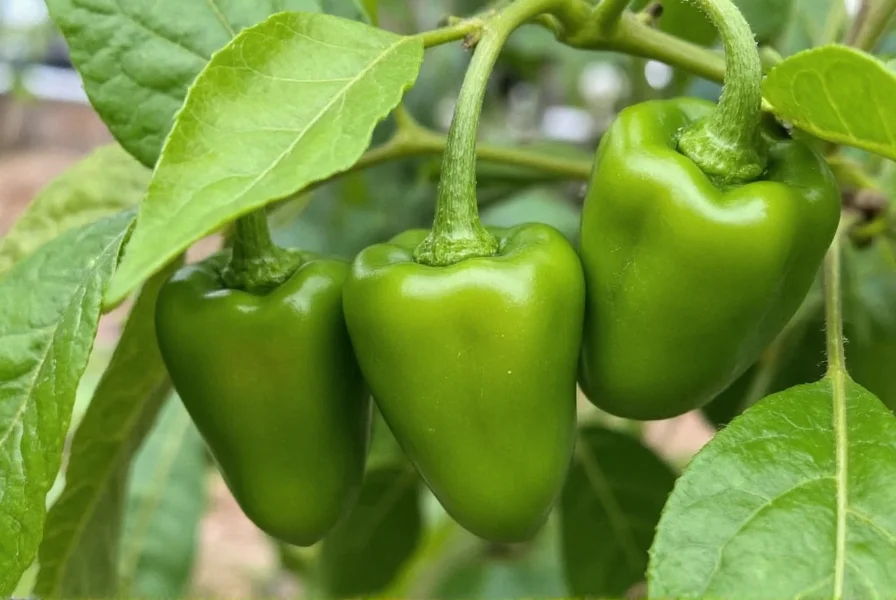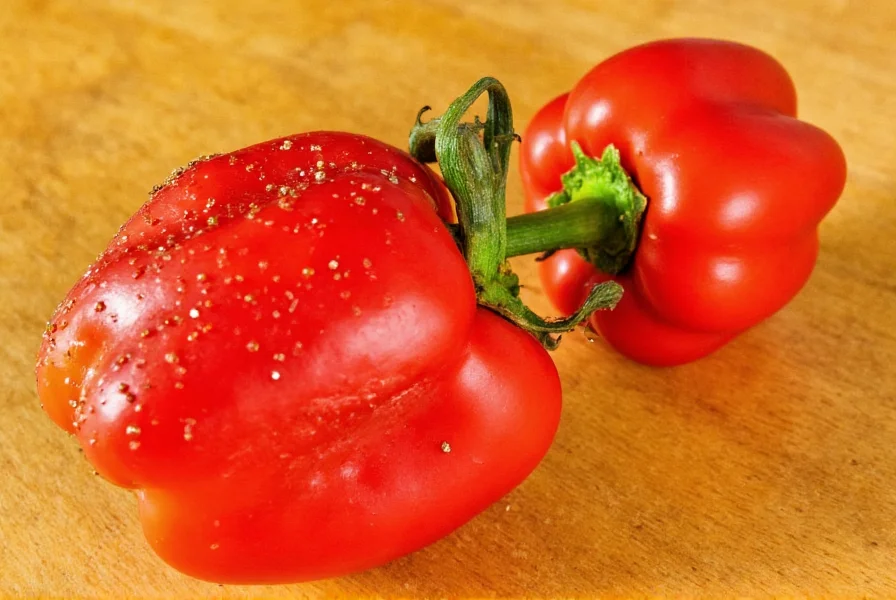Proper spacing is one of the most critical yet often overlooked aspects of successful pepper cultivation. Whether you're growing sweet bell peppers, fiery habaneros, or anything in between, giving your plants adequate room to grow directly impacts their health, productivity, and resistance to common garden problems. This comprehensive guide provides science-backed recommendations for pepper spacing that will help you maximize your harvest while minimizing common issues like fungal diseases and nutrient competition.
Factors Influencing Optimal Pepper Spacing
Several key factors determine the ideal spacing for your pepper plants. Understanding these variables allows you to customize your garden layout for maximum effectiveness.
Pepper Variety Size Matters
Pepper varieties differ significantly in mature size, which directly affects their spacing requirements:
| Pepper Type | Typical Mature Height | Recommended Spacing |
|---|---|---|
| Bell peppers | 18-24 inches | 18-24 inches between plants |
| Hot peppers (Jalapeño, Serrano) | 24-30 inches | 18-24 inches between plants |
| Small hot peppers (Thai, Bird's Eye) | 12-18 inches | 12-18 inches between plants |
| Large specialty peppers (Cubanelle, Shishito) | 24-36 inches | 24 inches between plants |
When determining proper pepper plant spacing, always check the specific recommendations for your variety, as some modern cultivars have been bred for more compact growth.
Support Systems and Their Impact on Spacing
Whether you stake, cage, or allow peppers to grow unsupported significantly affects optimal pepper spacing:
- Staked peppers can be spaced closer together (12-18 inches) since vertical growth is encouraged
- Caged peppers require standard spacing (18-24 inches) to accommodate outward growth
- Unsupported plants need maximum spacing (24 inches+) as they spread laterally
Research from agricultural extension services shows that properly supported pepper plants with appropriate spacing produce 20-30% higher yields than overcrowded, unsupported plants.

Row Configuration Options for Different Garden Sizes
Your garden's size and layout constraints influence the best row configuration for your pepper spacing needs.
Traditional Row Planting
For larger gardens or field production, traditional row planting with 24-36 inches between rows remains the most efficient method. This configuration allows for easy access for weeding, watering, and harvesting while maintaining proper air circulation between plants.
Block Planting for Small Spaces
Gardeners with limited space can use block planting with triangular spacing to maximize pepper plant density while maintaining adequate airflow. In this configuration:
- Space plants 18 inches apart in all directions
- Arrange plants in offset rows (like a honeycomb pattern)
- Limit blocks to 4-6 plants per section for best results
This triangular pepper spacing method increases plant density by approximately 15% compared to traditional row spacing while maintaining sufficient airflow to prevent disease.
Consequences of Improper Pepper Spacing
Understanding what happens when pepper spacing is inadequate helps emphasize why this gardening practice matters.
Disease Transmission Risks
Overcrowded pepper plants create humid microclimates that promote fungal diseases like powdery mildew and bacterial spot. University studies show that proper pepper spacing reduces disease incidence by up to 40% compared to plants spaced too closely.
Nutrient Competition and Reduced Yields
When pepper plants compete for nutrients and water due to inadequate spacing, yields decrease significantly. Research indicates that peppers spaced at 12-inch intervals produce approximately 30% fewer fruits than those spaced at 18-inch intervals, with individual fruits also being smaller.

Advanced Techniques for Maximizing Space Efficiency
Experienced gardeners can employ several advanced techniques to optimize their pepper spacing strategy.
Succession Planting with Peppers
Consider planting quick-growing companion crops like radishes or lettuce between young pepper plants. As the peppers mature and require more space, these temporary companions will have been harvested, effectively creating dynamic pepper spacing that adapts throughout the growing season.
Vertical Gardening Approaches
For gardeners with extremely limited space, growing peppers vertically on trellises allows for tighter initial spacing (12 inches) with plants trained upward rather than outward. This method requires more frequent pruning but can increase yield per square foot by up to 50%.
Regional Considerations for Pepper Spacing
Climate and growing conditions in your specific region should influence your pepper spacing decisions.
- Hot, arid climates: Slightly closer spacing (15-18 inches) can provide beneficial shade for soil moisture retention
- Cooler climates: Wider spacing (24 inches) improves air circulation and helps plants absorb more sunlight
- High humidity regions: Maximum spacing (24+ inches) is critical to prevent fungal diseases
Local agricultural extension offices often provide region-specific pepper spacing recommendations based on decades of field research in your particular growing conditions.
Monitoring and Adjusting Spacing After Planting
Proper pepper spacing doesn't end at planting time. Regular monitoring allows for adjustments as plants develop.
Watch for these signs that your pepper spacing might be inadequate:
- Yellowing leaves starting from the bottom of the plant
- Visible mold or mildew on leaves
- Reduced fruit set despite healthy flowering
- Plants leaning significantly toward available light
If you notice these issues, strategic pruning of interior branches can improve airflow in slightly overcrowded conditions, though prevention through proper initial spacing remains the best approach.
Can I grow peppers closer together in containers?
Yes, container gardening allows for slightly closer pepper spacing since you can more carefully control soil conditions and moisture. For pots 14-18 inches in diameter, plant one pepper variety. Larger containers (24+ inches) can accommodate two compact pepper varieties spaced 12-15 inches apart, but avoid mixing vigorous and compact varieties in the same container.
How does pepper spacing affect pollination?
Proper pepper spacing improves pollination by allowing better access for pollinators and facilitating wind movement that helps distribute pollen. Overcrowded plants often have reduced fruit set due to limited pollinator access and poor air circulation that prevents effective pollen transfer between flowers.
What's the minimum spacing I can use for growing peppers in a small garden?
The absolute minimum spacing for most pepper varieties is 12 inches between plants, but this should only be used for compact varieties in ideal conditions with excellent air circulation. For most gardeners, 15-18 inches represents the practical minimum that balances space efficiency with plant health. Remember that closer spacing requires more vigilant monitoring for disease and may reduce overall yield per plant.
Does spacing differ for seedlings versus mature pepper plants?
Yes, spacing considerations evolve as pepper plants mature. When transplanting seedlings, you can initially space them slightly closer (15 inches for varieties that will need 18 inches at maturity), then thin to the final spacing as plants establish. Direct-seeded peppers require thinning to proper spacing once they develop their first true leaves. Always base final spacing on the expected mature size of the variety.
How does pepper spacing affect watering requirements?
Properly spaced pepper plants have more efficient watering requirements. Overcrowded plants create dense foliage that retains moisture longer, increasing disease risk, while properly spaced plants allow soil to dry appropriately between waterings. Plants with adequate spacing typically require 10-15% less water overall because there's less competition for moisture and better evaporation control.
Final Considerations for Successful Pepper Spacing
Implementing proper pepper spacing requires planning but delivers significant benefits throughout the growing season. Remember that optimal pepper plant spacing represents a balance between maximizing your garden space and providing each plant with the resources it needs to thrive. By following these research-based recommendations and adjusting for your specific conditions, you'll create the ideal environment for healthy pepper plants that produce abundant, high-quality fruit throughout the season. The small investment of space required for proper pepper spacing pays substantial dividends in plant health, disease resistance, and overall yield.











 浙公网安备
33010002000092号
浙公网安备
33010002000092号 浙B2-20120091-4
浙B2-20120091-4